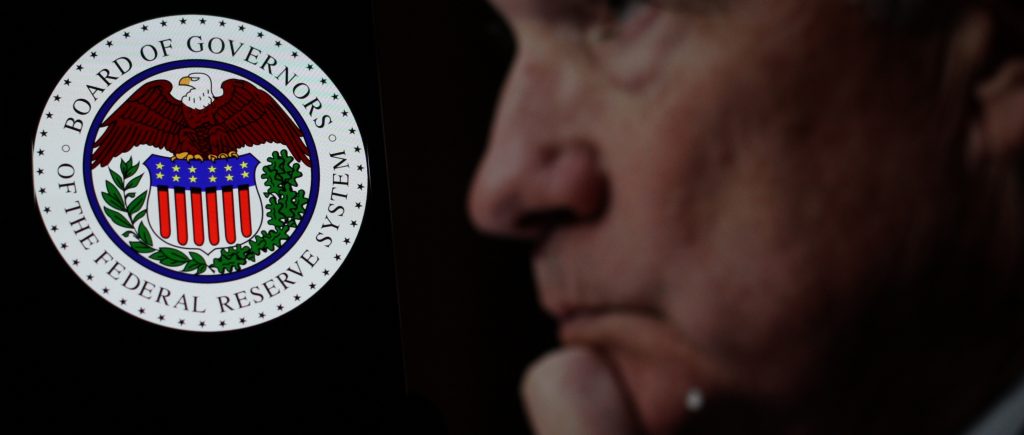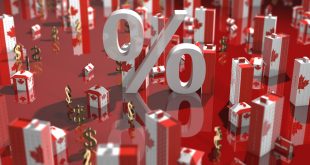The Fed is prepared to reduce key interest rates next month as a result of inflation getting closer to its 2% target, while officials at the Fed are now focusing on the state of the labour market because they are growing more optimistic about their ability to control inflation amid a slowdown in hiring, and an increase in unemployment. A lower Fed rate will probably eventually result in lower rates for mortgages, auto loans, and other consumer borrowing; however, the rate of future rate drops is likely to depend primarily on the continuation of solid employment growth.
In a much awaited address at the Jackson Hole Economic Symposium on Friday, Fed Chair Jerome Powell is expected to share thoughts on the Fed’s view for the economy and possible course corrections. Powell and his previous Fed chairmen have generally used this forum to announce shifts in strategy or way of thinking.
Wall Street traders are currently projecting three quarter-point Fed rate cuts in September, November, and December, despite the fact that recent economic data, such as reduced inflation and a sharp rise in retail sales, have allayed fears about the possibility of a recession. In anticipation of these rate reductions, mortgage rates are already declining; if hiring continues to slow down, a half-point Fed rate decrease in September may become more possible. On September 6, following the Jackson Hole conference but prior to the Fed’s mid-September meeting, the next jobs report is scheduled for release.
A prominent Fed official, Atlanta Fed President Rafael Bostic said in an interview that evidence of weak labour market may warrant a faster pace of interest rate cuts. Even if hiring remains strong, the Fed is expected to cut interest rates this year due to progress in inflation. In July, consumer prices rose 2.9%, the smallest increase in more than three years. Bostic also noted that the economy had evolved a few months ago, when he suggested it might not be necessary to cut interest rates until the end of the year. He now expresses greater confidence in achieving the inflation target and acknowledges significant weakness in labour markets compared to last year, indicating the likely need for an urgent policy shift.
Statements by Fed officials Bostic and Austin Goolsbee confirmed that as inflation has declined, inflation-adjusted interest rates rise, even as inflation slows. This tightening of monetary policy raises concerns about the possibility of an economic slowdown. While Bostic currently sees the labour market and economy as largely healthy, he still expects a “soft landing,” where inflation declines without a recession. However, given the uncertainty surrounding the economy and the Fed’s focus on future data, Powell may have limited ability to provide specific guidance on the central bank’s next steps.
Powell’s expected speech in Jackson Hole:
On Friday, Jerome Powell is anticipated to address the status of the Fed’s fight against inflation. His remarks could lead to a rate reduction and reassure investors that the central bank can prevent a severe recession in the economy. The much awaited address at the Jackson Hole Economic Symposium coincides with a pivotal moment for the US Treasury market and the Fed.
Just seven weeks before the presidential election, Powell and his colleagues are getting ready to reduce borrowing prices, a move that will probably draw a lot of public criticism. In addition, after years of concentrating mostly on pricing concerns, regulators are now paying more attention to the contracting labour market. The query is: Are we going to run into a policy error? The market is erratic at the Jackson Hole statement’s edge because of this. Another query is: What information regarding the Fed’s role in the possible policy easing does the president need to provide to investors?
Markets faces uncertainty with obvious worries
Investors were on the brink of deep anxiety as they anticipated the pace and size of future interest rate cuts and July’s labour market numbers led to huge market volatility, with the S&P 500 losing more than six percent in just three trading days. Treasuries rose, and traders expected the Fed to start cutting interest rates in September with a larger-than-usual move of 50 basis points. Powell and his colleagues have made previous mistakes, such as not acting quickly enough to address the rise in inflation during the pandemic and insisting it was “temporary,” and markets now see them intent on avoiding similar mistakes on the employment front as price pressures slow.
Despite a historically strong labour market, some cracks are beginning to appear. For their part, US employers cut the pace of hiring last month, while the unemployment rate rose for the fourth time in a row, raising concerns about the impact of higher interest rates on the labour market. Many economists expect significant downward revisions in employment reports for the year through March.
The key question for investors is whether a further decline in the labour market is likely to lead to a larger rate cut next month or a more aggressive approach to rate cuts in the following months. Powell will deliver his speech at 10 a.m. New York time on Friday at the Fed’s economic policy symposium in Kansas City.
There may be an argument in favor of moving a little faster at first and then slowing down. Some experts believe this argument only gains much weight if there is evidence that the labour market is declining in a more significant way. A year ago, Powell and his colleagues were heading in the opposite direction, raising interest rates to their highest level in a generation. They described the labour market as tight, inflation as “too high,” and expressed a willingness to raise interest rates further if necessary.
Mitigating inflation and monetary policy expectations:
Since then, inflation has eased significantly, although it remains above the Fed’s 2% target. A leading indicator of core price pressures, PMIs, actually fell in July for the fourth month in a row, confirming the downward trend. Some analysts expect Powell to acknowledge that the conditions exist for them to start tapering the policy soon. It is not clear whether Powell’s speech might explicitly include a reference to September, but analysts believe the message is likely to be that monetary policymakers appear well placed to do so.
It is expected that Powell’s message to the markets requires careful calibration to deal with pressures related to adjusting monetary policy and avoid sending a negative signal about economic expectations. While the recent market recovery and positive economic indicators have led to a decline in interest rate cut expectations, traders remain concerned about the future.
When Jerome Powell was asked about the possibility of a 50 basis point cut in July, he stated that it is not something the Fed is currently considering. He and other Fed officials have stressed that monetary policy decisions are likely to be guided by the “sum” of the impact of incoming data. Without this information, Jerome Powell could not definitively say at Jackson Hole that a 50 or 25 basis point cut in interest rates was likely. He is likely to maintain this openness and preserve the options as he should. This year’s symposium theme, “Reassessing the Effectiveness and Development of Monetary Policy,” is relevant given the uncertainty surrounding the pace and level of future interest rate cuts. The complexities of the post-pandemic economy have reinforced this consideration, as some Fed officials believe the neutral rate has risen.
No one seems to know the destination, so it is widely believed that Jerome Powell may stress the need to deal with uncertainty and is expected to point to his pledge to seek guidance from economic data. The data is expected to help inform monetary policy makers what this direction is, and they can move slowly or quickly depending on the economic data. Powell is likely to indicate that the Fed has become more confident in achieving its goal related to the inflation reading, and while few economists believe that the task has been fully accomplished, the focus has shifted from inflation to the labour market.
The pace of future interest rate cuts is expected to depend on economic data. The recent decline in employment and increasing unemployment have raised concerns about the possibility of a recession and speculation about decisions more favorable to higher interest rates.

 Noor Trends News, Technical Analysis, Educational Tools and Recommendations
Noor Trends News, Technical Analysis, Educational Tools and Recommendations




